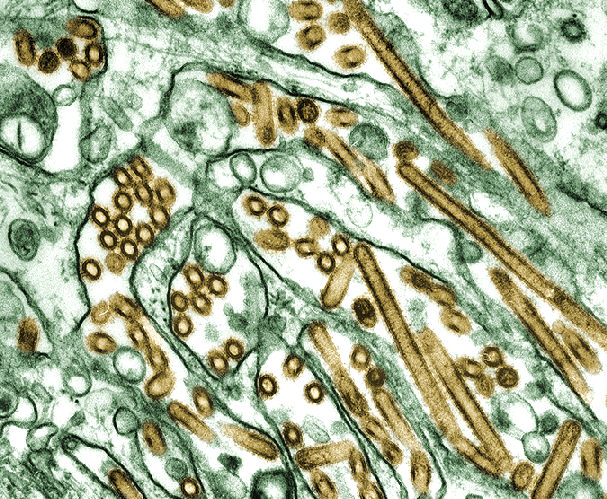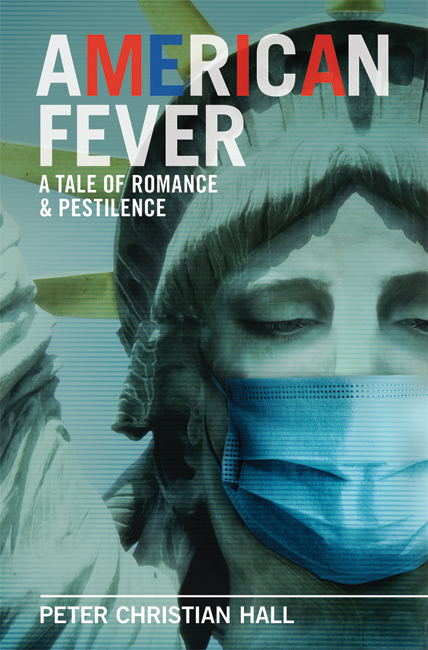Day 92-5: Flu Virus ‘Seeds’ Humans
Sorry this took so long to prepare. I want to get it right.
R. Edgar Hope-Simpson was 10 when the 1918 pandemic struck England, so he never had the professional opportunity to observe an influenza strain that crossed directly from another species, the way H1N1 is commonly thought to have done in 1918—and as H5N1 has done.
The pandemics that Hope-Simpson lived through as an adult were minor affairs—strains that conquered the world by mixing genes from preexisting human varieties, as H1N1 swine flu did. Many people had vestigial immunity from exposure to precursor strains.
 H5N1 TOOK ITS TIME (CDC: Cynthia Goldsmith, Jacqueline Katz & Sherif R. Zaki)I’m guessing that Hope-Simpson would concede that species-jumping strains are so intense, so virulent, that they can and do leap from the sick to the healthy. Leaving aside the curious, almost incomprehensible resistance in some elderly people, no one has any immunity. These strains rage through the population like fire. We’ve all seen it this year.
H5N1 TOOK ITS TIME (CDC: Cynthia Goldsmith, Jacqueline Katz & Sherif R. Zaki)I’m guessing that Hope-Simpson would concede that species-jumping strains are so intense, so virulent, that they can and do leap from the sick to the healthy. Leaving aside the curious, almost incomprehensible resistance in some elderly people, no one has any immunity. These strains rage through the population like fire. We’ve all seen it this year.
I think Hope-Simpson’s theories can explain how and why H5N1 percolated for so long before it went global. The virus had to seed us to reach a kind of biological critical mass.
H5N1 killed most of the Indonesians, Egyptians, Vietnamese, Chinese, Indians, and Africans who caught it from birds or other animals. A minority of victims survived. Many weren’t logged as H5N1 cases. Many survivors probably thought they had outlasted dengue fever or some other tropical disease.
But bird flu had found a home in them, if Hope-Simpson was correct. After falling ill, their bodies suppressed the symptoms and the virus proceeded to lie dormant inside them for a year or two.
Now, according to Hope-Simpson, the microbes were desperate to replicate. This entailed further evolution so they could jump past their carriers’ immune systems to infect other people. When their recovered hosts’ Vitamin D ran low, H5N1 would power up, mutate, and attack new subjects.
At this stage, H5N1 became a human disease: An avian virus that had learned to survive in one human being became capable to spreading to other human beings. This explains the early cases in which no animal or human vector—a sick chicken or person or cat—was identified. One person had encountered another who harbored freshly minted human H5N1. Without symptoms.
Each low-light season (rainy season, in the tropics) would bring a wavelet of human cases that would recede after spreading just a bit more. I begin to wonder about the rumors of experimental H5N1 vaccines based on human survivor antibodies. Could they have helped it circulate?
The ‘First’ Flu Wave is Second … or Fourth
I’ve also located strong evidence that the so-called springtime inaugural wave of the 1918 pandemic wasn’t the first. A noted U.K. microbiologist named Dr. John S. Oxford makes a very good case that British soldiers garrisoned in Étaples, France, were felled by what looks to have been pre-pandemic flu in December 1916. They turned blue.
Mortality studies from New York City at the start of 1918 indicate an undetected pandemic wave that took the young, spared the old. Helen Branswell published an article that raised similar questions during the swine flu pandemic.
Did the spring 1918 pandemic follow a series of herald waves that no one noticed? Each would have left more carriers embedded in a seemingly healthy populace. One wave’s survivors would quietly inspire the next until the tide of illness rose so high that it could be ignored only by monarchs and politicians bent on world conquest.
If I’m right, we can catch H5N1 from just about anyone. We could catch it from sick people because pandemic influenza trumps the seasonal pattern. We might get it, per Hope-Simpson, from recovered latent carriers. Or it can be spread, as everyone knows, from infected people who aren’t yet showing symptoms.
This may explain why the first wave of pandemic flu is weaker than a later one. The second and third waves are spread by both freshly sickened carriers and by seemingly healthy veterans from earlier waves. Sources of contagion abound. Because the virus is mutating to leap from recovered victims, later waves are likelier to entail evolutionary gains in virulence as the unstable RNA virus tries new tricks.
Which could in theory render any vaccines generated from a first-wave virus obsolete!
No one is safe until the deadly strain loses its punch. We knew that, didn’t we? Now we know why.



 [American Fever]
[American Fever]